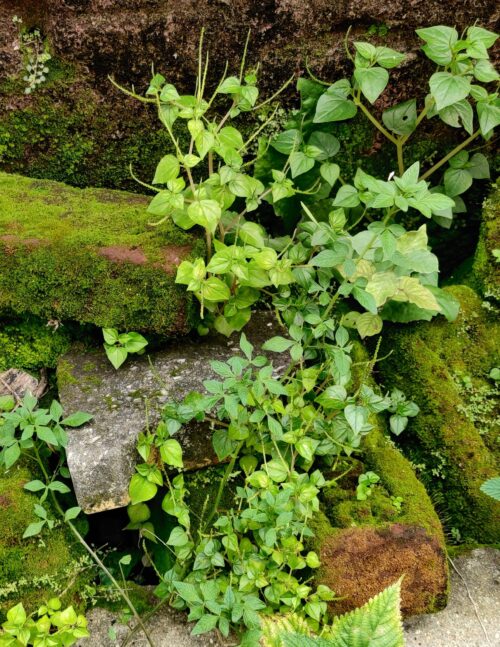According to the Ministry of Agriculture, Department of Agriculture and Cooperation, Government of India –
Integrated Pest Management Programme (IPM) is a broad ecological pest control approach aiming at best mix of all known pest control measures to keep the pest population below an economic threshold level (ETL). It is an economically justified and sustainable system of crop protection that leads to maximum productivity with the least possible adverse impact on the total environment.
The Integrated Pest Management Programme can be defined as – “a sustainable approach of management of pest by the combination of biological, cultural, mechanical and chemical tools in a way that minimizes economic, economic, health and Environmental Risks. In other words, the IPM is an “economically justified and sustainable system of protection of crops that leads to the maximum agricultural productivity with the least possible negative impacts on the natural environment”. This worldwide programme lays emphasis on the application of Bio-pesticides and Bio-agents with rare and unavoidable application of safe chemical pesticides.
The concept of Integrated Pest Management was developed by Dr. Ray Smith (1919 – 1999), an American entomologist and educator, around 1950. In 1940s, Dr. Smith led a ten- year project to test his basic concept of “supervised control” of pests of alfalfa. During this project, he gathered enormous amount of economic, biological and ecological data that helped him in developing Integrated Pest Management Model. He worked on it with Dr. Perry Adkisson for a long time and joined hands with a number of International Organisations like FAO, UNEP, and the World Bank etc. to spread his concept. He took the lead in forming the Food and Agriculture Organization’s Panel of Experts on Integrated Pest Control in 1967 and headed this group from its inception until 1982.
He worked for the expansion of concept of Integrated Pest Management on priority basis and worked directly with farmers, experts and policy makers in Latin America, Asia, Africa and assessed the needs of pest control in these regions. A key priority was expanding IPM’s philosophy and practice in developing areas and working directly with farmers, experts, and policymakers in Latin America, Asia, and Africa to specially assess the pest-control needs of those regions. He organized the FAO’s 1974 Global Project for Integrated Pest Management of Major Crops, lectured and published prolifically overseas, and consulted to USAID and the FAO on food production and pest control issues. Dr. Smith received the 1997 World Food Prize with Dr. Perry Adkisson for their shared achievement in developing and propounding the practice of Integrated Pest Management programmes by farmers around the world.
Aims and Objectives of Integrated Pest Management Programme
Following are the aims and objectives of the IPM –Programme –
- Reduction of the application of Synthetic Chemical Pesticides
- Evolve and apply the Environmentally Sound Practices of Pest Management
- Application of safe chemical pesticides with minimal risk of human health
- Re-useable return on investment
- Providing consumable and safe food to consumers
Principles of Integrated Pest Management Programme
The IPM Programme is based on following five basic management principles –
- Identification of key pests and beneficial organisms
- Defining the management unit, the Agro-ecosystem
- Development of management strategy
- Establishment of Economic thresholds (loss & risks)
- Development of assessment techniques
- Evolving description of predictive pest models
Implementing the IPM –Programme
The IPM Programme can be implemented through following important tools –
(I).Monitoring: Keeping tracks of the pests and their potential damage is called as pest monitoring. This provides knowledge about the current pests and crop situation. It also helps in selecting the best possible combinations of the pest management methods.
(II). Pest-resistant varieties: Developing pest resistant varieties is an important and powerful tool for mast management. It is a continuous process. Crop plants are bred and selected when available to protect against key pests.
(III). Cultural pest control: Cultural practices of pest control are to be given greater importance under this programme. It includes crop production practices that make crops less susceptible to pests. Crop rotation, sowing cover crop, keeping plants in rows and leaving proper spaces between rows, planning of dates of plantation and harvesting, destruction of old crop debris etc. -are a few examples. Cultural controls are based on the biology and development processes of pests.
(IV). Mechanical control: Pests can be removed if someone has complete knowledge and behaviour. Hand picking, installation of bird perches, mulching, and trap installation are a few examples of mechanical control.
(V) Biological control: These include augmentation and conservation of natural enemies of pests such as insect predators, parasitoids, and pathogens and weed feeders. In IPM programmes, the native natural enemy population is conserved and non-native agents are released with utmost caution.
(VI) Chemical control: Under the IPM programme, safe chemical pesticides are used to keep the pest population below economically damaging levels when the pests cannot be controlled by other means. It is applied only when the pest’s damaging capacity is nearing the threshold.




